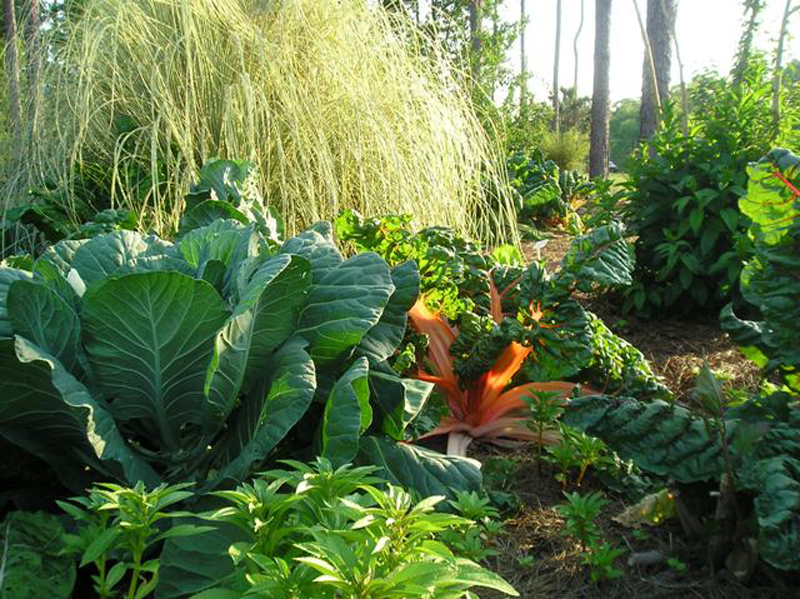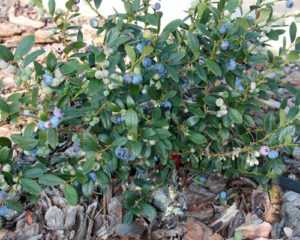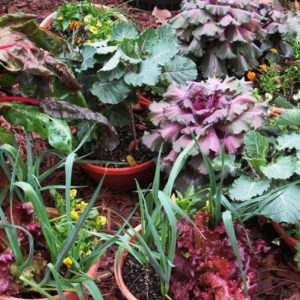Adding Tasty Additions to a Beautiful Yard
 For people with small yards, edible landscaping is a great way to have your beautiful garden, and eat it too. Can’t you see yourself now, walking out your door to pick some strawberries from the edging along a bed of mixed spicy greens like arugula, bright-light
For people with small yards, edible landscaping is a great way to have your beautiful garden, and eat it too. Can’t you see yourself now, walking out your door to pick some strawberries from the edging along a bed of mixed spicy greens like arugula, bright-light
s chard and homegrown spinach? And looking up to admire a vibrant peach tree loaded with the promise of a bountiful harvest of juicy sweet fruit. The truth is that if you love good food, and you’ve got even a small plot and a little sun, yu can grow and harvest better food than you can buy at the grocery store.
So where to begin? First, don’t be afraid of experimenting. Plants can easily be lifted and changed. It’s how we learn, and that’s what makes gardening fun and challenging.
M ake a list of all the fruits and veggies you love to eat, then visit your local county agent, ask at local nurseries and garden shops, or spend some time on the web to determine what will grow in your area.
ake a list of all the fruits and veggies you love to eat, then visit your local county agent, ask at local nurseries and garden shops, or spend some time on the web to determine what will grow in your area.
Just as with ornamentals, edible landscaping starts by thinking about size and shape of the plant, its light requirements, and the color and timing of the blooms. From there you can let your imagination run free. Start thinking about fruit trees as specimen plants in your beds, as you would use a crepe myrtle or a dogwood. Apples and pears are stunning when in bloom, with clouds of pink and white in early spring, as well as being extremely colorful when loaded with fruit. Persimmon trees are the show pieces of a fall garden; their brilliant bright orange fruit hang like Christmas ornaments on the tree well past leaf drop. If you’re a fan of fall foliage, persimmon trees are outstanding; cherry pink, burnt orange and clear yellow. Use your low growing vegetables and herbs in a free form mass under the trees as ground cover, combining the colors and textures. Think of creepers and spillers like oregano, thyme and strawberries to soften pathway edges. Grapes, kiwi, tomatoes, cucumbers, and peas work well on arbors and fences. Hedges are another great place for edibles; include some pineapple guava or kumquats for a colorful evergreen show.
Working fruit and vegetables into your existing landscape is another possibility; if you need some shad in your yard, why not plant a pecan tree? A trimming of frilly parsley can brighten up an existing flowerbed, as well as provide food for the monarch butterfly. Blueberries make a wonderful communal hedge between your neighbor and yourself: it’s sure to foster a better relationship with them, as well as the birds.If you’re a small space gardener with only a little sun, or hard to work soil, why not create a potted garden? This is a lot of fun, and the possibilities are endless. Citrus trees adapt well to growing in pots, and many herbs, including thyme and oregano, look wonderful spilling over the edge of a pot. You can create theme pot gardens; try “Little Italy†with a Blood Orange, fennel or an eggplant as the center piece, and mix of oregano, basil and parsley around the edges. Or how about an “Asian Delight†planter featuring a Yuzu lemon, Thai ginger or lemon grass as the center piece with baby Pac Choy and Red Mustard mixed on the edges.
These are great books on the subject; check out Rosalind Creasy’s, “The Complete Guide to Edible Landscapingâ€, its chock full of great ideas. Florida’s own Tom McCubbin wrote a great resource book for the Florida gardener called “Florida Home Grown 2: The Edible Landscapeâ€.
Adding edible plants to your landscape can be a fun and rewarding experience, one that’s sure to amuse your neighbors when you add cabbages and peas to the front flower beds, and provide many tasty treasures for your table.

